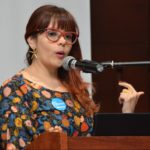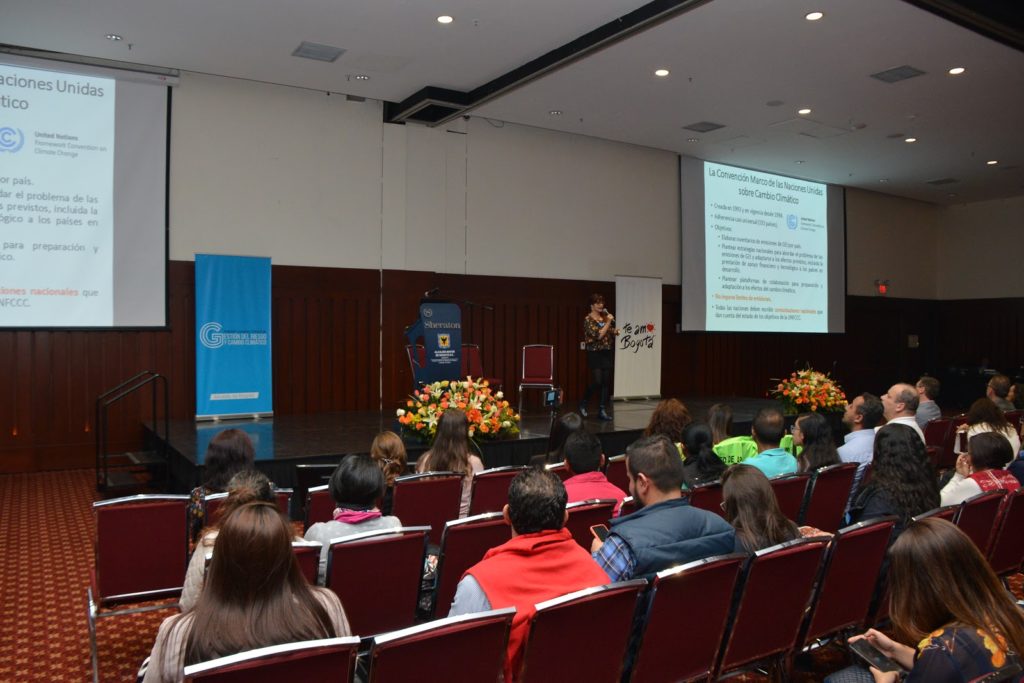Flooding conversations in Colombia
- Case studies from IPCC authors
- Conversation shops in Senegal
- Talking your audience’s language in Indonesia
- Energising analogies in Ukraine
- Flooding conversations in Colombia
- The bigger picture in Japan
- Local stories in Mozambique
- Informing policy in the Caribbean
- Stitching in detail in India
- Connecting personally in Argentina
- Neighbourhood interest in the USA
- Unpacking the science in France
This case study is part of a set of case studies commissioned by the IPCC WGI TSU (Intergovernmental Panel on Climate Change, Working Group I Technical Support Unit) and collected by Climate Outreach.
Dr Paola Arias shares how an unexpected event during a community meeting provided an opportunity to make climate change even more relevant to her audience.
 Dr Paola Arias, University of Antioquia – Author for Sixth Assessment Report, Climate Change 2021: The Physical Science Basis @UdeA – Twitter, @universidaddeantioquia
Dr Paola Arias, University of Antioquia – Author for Sixth Assessment Report, Climate Change 2021: The Physical Science Basis @UdeA – Twitter, @universidaddeantioquia
“One of the ways that I engage with the public is through community meetings in different neighbourhoods in my city. One particularly memorable one was an outreach activity during the “Second Distrital Symposium on Climate Change”, held in Bogotá during July 2019. The event was organized by the Risk Management and Climate Change Office in Bogotá, who are responsible for managing climate change-related risks, and was attended by over 300 people, mainly from communities and risk management sectors.
During the event, there had been heavy rains, and as I was giving the closing talk the ceiling in the next room fell in and cut off the electricity. After establishing that nobody was injured, I was encouraged to carry on with my talk, without any slides or amplification because there was no electricity. But the events that had just happened were perfect to keep talking about climate change. So I started talking about risk management and climate change, and the impacts of climate crisis in society. People started asking questions. We did not follow the usual protocol of waiting to the end of the talk to ask questions but ended up having a more “intimate” talk instead.
Bogota has been built over flood plains and issues regarding the water table and percolation are common. As a result, the landfill that serves the city is currently collapsing and water sources are being polluted by lixiviates. Therefore, talking to people about issues that affect their daily life helps to connect them to the global crisis.
I often use this approach when engaging with the public, including scientific evidence but then interpret it considering the social impacts. I find this provides greater potential to interact with people.”
This case study is a great example of putting the following principles for effective public engagement into practice.
- Principle 1: Be a confident communicator (see Handbook page 6)
- Principle 2: Talk about the real world, not abstract ideas (see Handbook page 8)
- Principle 3: Connect with what matters to your audience (see Handbook page 11)
Find out more about the six principles in our Communications Handbook for IPCC scientists and accompanying webinar.

If you would like to contribute a case study of your public engagement experiences as an IPCC author, we would love to hear from you. Please share your stories with the WGI Technical Support Unit directly.
Reports & guides
Sign up to our newsletter
Thank you for signing up to our newsletter
You should receive a welcome email shortly.
If you do not receive it, please check your spam folder, and mark as 'Not Spam' so our future newsletters go straight to your inbox.

